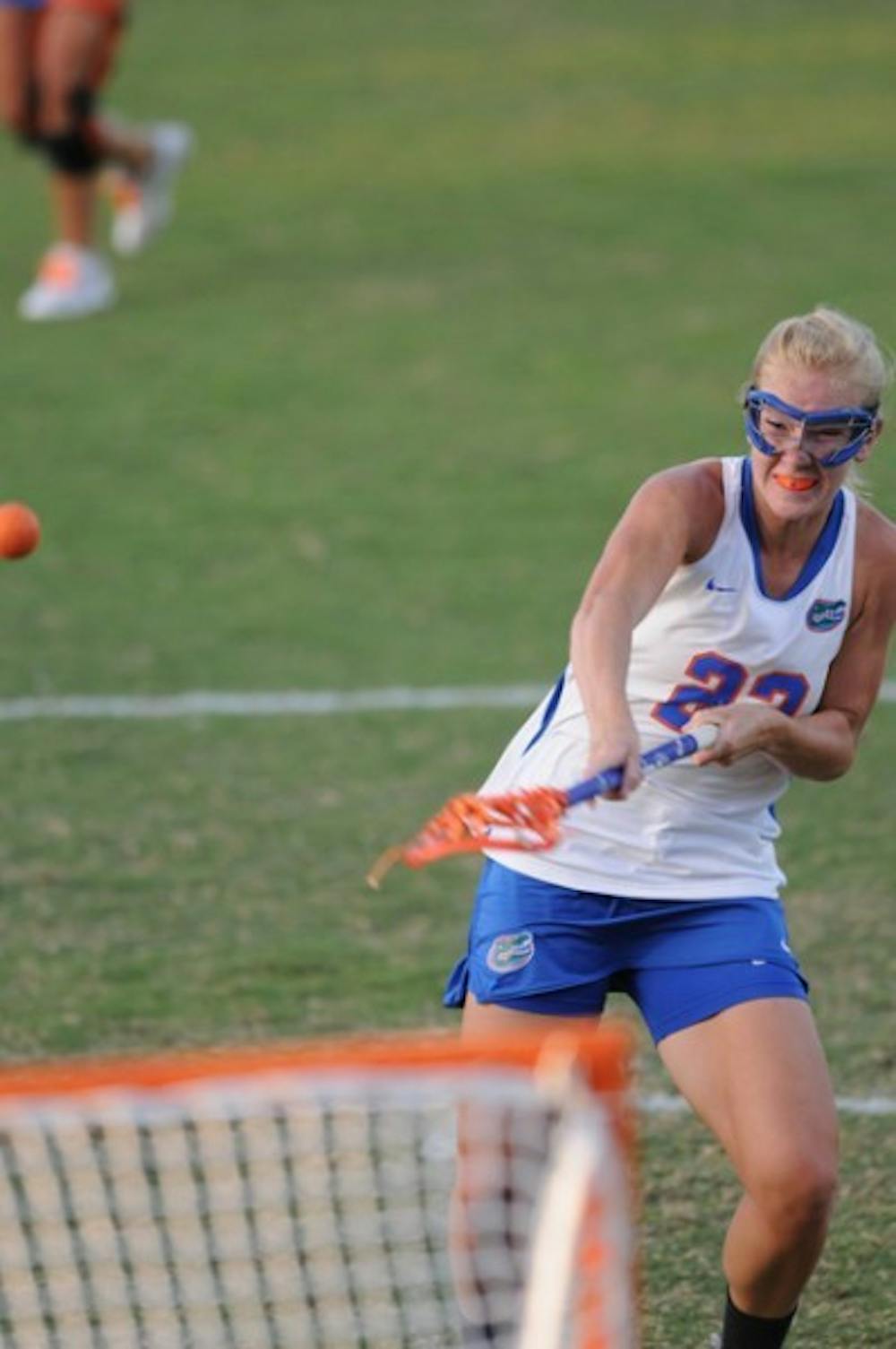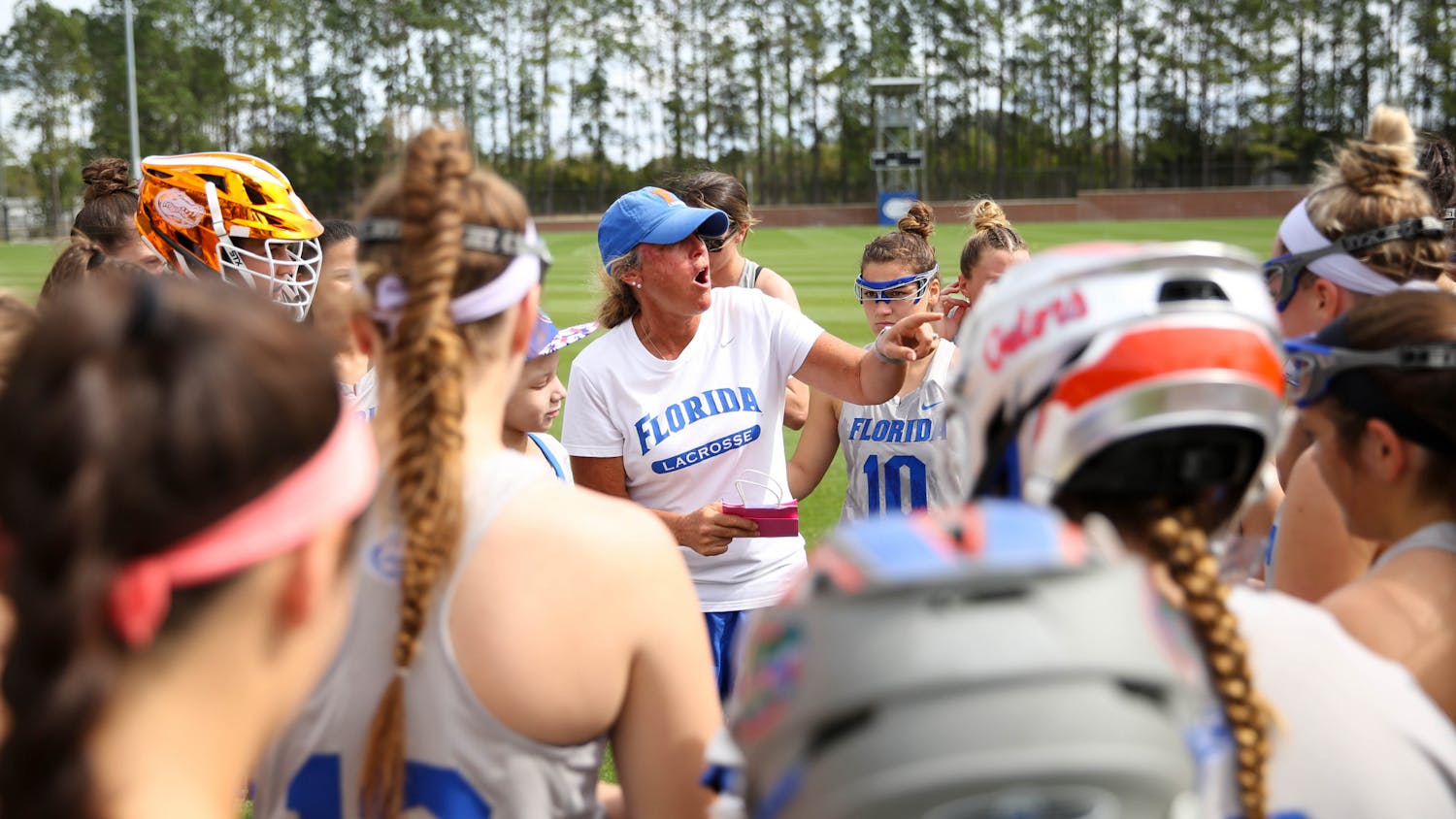Soon, just wearing goggles isn’t going to be good enough.
After watching one of her teammates go down with a concussion last Saturday against Penn State, Gators midfielder Colby Rhea can see a time when the rising toll of brain injuries catches up with women’s lacrosse.
“We do need protection from collisions with other people, not necessarily from a ball or a stick, because that doesn’t hurt too bad,” Rhea said. “It’s the collisions with other people that we need protection for.”
The type of brain trauma her teammate recently suffered will occur less often and, ideally, won’t happen at all with additional head protection to go along with the sport’s wired goggles and mouth guards.
Sophomore Brittany Dashiell, a player UF coach Amanda O’Leary called the “guts” of the team, suffered a concussion after colliding with a Nittany Lions player and falling chin-first into PSU’s artificial turf.
Rhea withstood a similar hit, albeit not as hard, against Georgetown earlier this season. But it doesn’t compare to the blow her teammate suffered.
“Brittany doesn’t remember anything, so I think it was pretty bad,” Rhea said.
From 1988-2004, NCAA data indicates that 6.3 percent of all injuries in women’s lacrosse were concussion-related, a higher percentage than college football (6 percent) during that time.
Unlike football, men’s lacrosse and other full-contact sports, women’s lacrosse professes to be a non-contact sport, which would put its physicality in the same wheelhouse as volleyball, in which only 2 percent of injuries are concussions.
“It is getting a lot more physical from high school to college,” Rhea said. “That’s why we are in the weight room every day getting stronger. The hits that me and Brittany have taken were like helmet hits. You need a helmet for it.”
Sophomore Caroline Chesterman and freshman Krista Grabher admitted there is a contradiction buried within women’s lacrosse.
Is it a physical game worthy of protective equipment, or a finesse sport in which only athleticism — not brawn — is permitted?
“They’ve talked about it in a couple states, in New York where I’m from, and it’s gotten denied,” Chesterman said. “Concussions have been more frequent because lacrosse is considered a non-contact sport, but there is a lot of contact to it.”
Like Rhea, Grabher can see a form of helmet becoming mandatory if the sport continues to grow even more physical. The drawback for both players, they said, would be dealing with the transition of suddenly changing a game they have played without helmets their whole careers.
Rhea said it took her two years to get used to seeing the ball properly after wire goggles were implemented at all levels in 2005.
“I personally do not want head gear, but there are a lot of problems with head injuries,” Grabher said. “A girl on our team had a concussion. We’ve had a few on our team only in two years. And so with that, there may be more and more people wanting to give us head protection.”
Grabher said the other Florida players who have suffered head injuries since the Gators’ inaugural season suffered “minor” concussions, which sidelined them for a few days.
“We’re out there, we work hard and we’re tough girls, so we like the fact that it’s a tough sport. But there is the fact that we don’t really wear that much protection,” Grabher said. “There’s this up and down whether we should have more protection. And I think the girls would rather have more protection than lose a lot of the roughness in the sport.”






